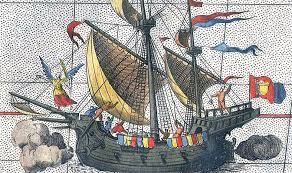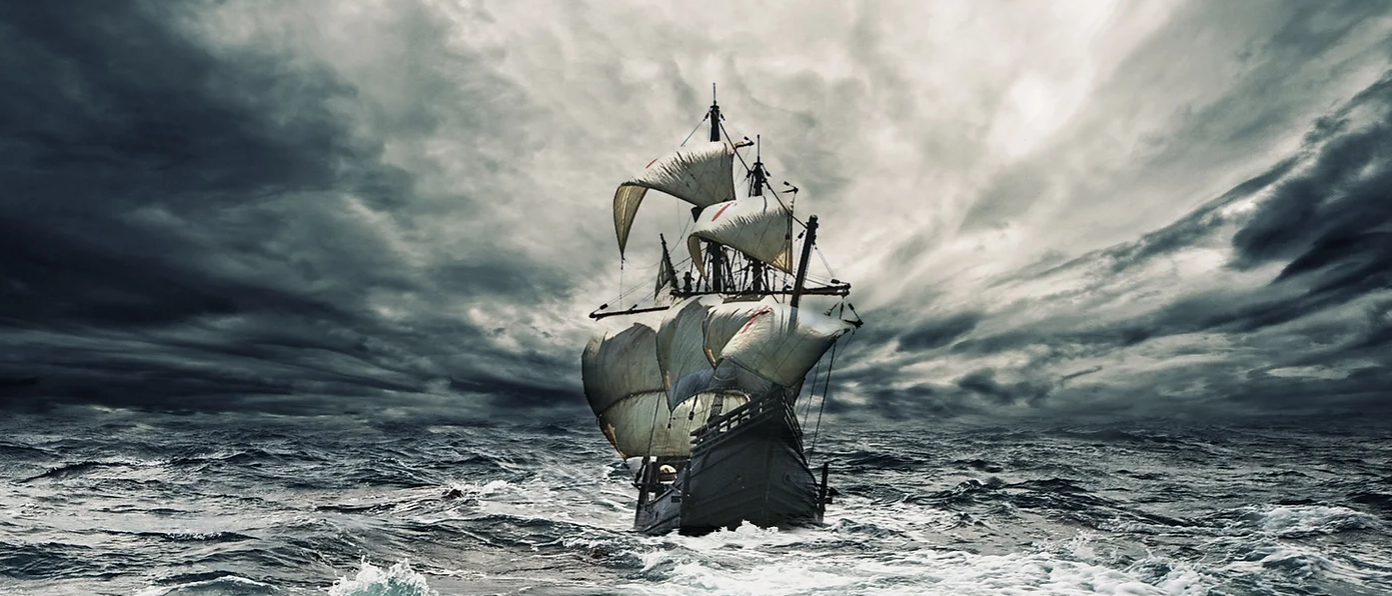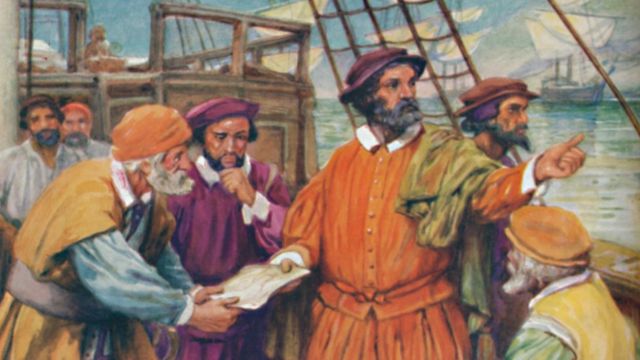 The crew of the Victoria boat were hungry, thirsty and disoriented.
The crew of the Victoria boat were hungry, thirsty and disoriented.
It is September 8, 1522, and a ship docks at the Seville dock in appalling conditions.
She has just been towed down the Guadalquivir river from Sanlúcar de Barrameda, on the southern coast of Spain, where she arrived two days earlier. On board, 18 hungry, thirsty and disoriented crew members.
The ship in question is the Nao Victoria and at the head of those sailors is the Spanish Juan Sebastián Elcano. It was not their initial objective, but they have just gone down in history: they have managed to go around the world for the first time.
Anyone would imagine that the first thing those sailors did was go out and celebrate. However, far from the truth, they went, barefoot, to the church of Nuestra Señora de la Victoria and the Cathedral of Seville. They wanted to keep a promise. The promise they made during the worst moments of their journey.
Such were the hardships that these men went through that, beyond glory, simple survival was the best of prizes. They have just accomplished a feat hardly imaginable aboard a ship that, for three years, was the closest thing to a prison.
Let's travel back three years to find out what happened on those ships.

It all begins on August 10, 1519, when five ships and about 250 men, led by the Portuguese Ferdinand Magellan, set out from Seville.
On board, the ships there is food and drink for two years.
"They carry salted meat and fish, fresh vegetables, fruit, cheese, butter, bread, oil, vinegar and spices. There is also quince, although it is used almost exclusively by officers," according to Lola Higueras, former technical director of the Naval Museum of Madrid.
A varied diet that, however, lasts only a few months, since there are not enough means to preserve food and it starts to rot.
"Bread gets wormy very quickly, so they almost eat more worms than bread. It's a monstrous thing," Higueras points out.
The lack of supplies begins to take its toll and, after reaching the Pacific, the situation only worsens.
They do not know the length of this ocean and as the days go by many crew members begin to starve.
Others, in their desperation, cast their eyes to the ground looking for the only living animal that resists: rats.
"Half a ducat (the currency of that time) was paid for a rat," says historian Pablo Emilio Pérez-Mallaina.
This unpleasant food then becomes a real delicacy. And in an element of salvation as we will see later.
But the rats also run out and the expedition continues without finding land. It is then that, desperately, one last element enters the sailors' diet.
"They even eat the leather that protects the candles. They eat it by softening it in seawater and, sometimes, overheating it a little over the fire," says Higueras.
Heartbreaking hunger is not the only headache aboard these small ships. Thirst also becomes the protagonist of the conversations of these brave men.
The water also begins to rot after a few months and "imaginative solutions are sought to collect rainwater with candles", as Lola Higueras explains. But it doesn't always rain, nor is the water they collect enough for so many crew members.
Hence, some sailors can no longer resist and throw their buckets into the sea to relieve their throats with salt water. "This generates a series of tremendous cramps," says historian Carlos Martínez.
Thirsty, locked in a boat surrounded by water and unable to drink because they will probably get sick: mental torture that is repeated day after day for many extended periods of the journey.
Without water, the only drink that hydrates minimally is wine, although it is highly rationed and can cause disputes among sailors. But even this delicacy also ends up rotting.

Hunger and thirst are soon joined by disease. Especially one that those sailors know well, scurvy, a terrible disorder very common in those expeditions that spend long periods without touching land.
This disease spreads among sailors due to the shortage of fresh fruit and vegetables, which causes a significant vitamin C deficiency.
"Their teeth fall out, their gums swell and the body weakness is terrible until it leads to death. But it also involves another very serious issue. The manoeuvring of the ships is based on climbing to manage the movement of the sails. A time comes when the sick can no longer climb and the ship would be left adrift", explains Lola Higueras.
Scurvy plagued crews who spent long periods without touching land. Few are spared from this disease, and the lucky ones remember then the moment when they left their scruples behind and threw themselves on the rats that were scurrying around the ship.
"They become an element of salvation because rats synthesize vitamins B and C in a special way," Higueras points out.
But the physical torture of these three years is also accompanied by the psychological. Those ships, barely 80 or 90 tons, become real "prisons" for the fewer and fewer crew members who resist.
.jpeg) They have small cellars, but, far from being a place to rest, they are used to store the ship's spare parts and the little food that lasts.
They have small cellars, but, far from being a place to rest, they are used to store the ship's spare parts and the little food that lasts.
The deck is the only place for the crew, day and night, exposed to total inclement weather and unable to protect themselves.
The fire, prepared with sand and refractory bricks, is not intended to keep the sailors warm, but is reserved almost exclusively for cooking. And only when possible.
"Most of the time they cannot light the stoves on board, because with any storm, it can cause an ember to jump and burn the boat. The regulation is very strict. Candles cannot be lit near certain points. They cannot use oil lamps because they oscillate and can cause a fire. And smoking is strictly prohibited," explains Lola Higueras.

In a three-year journey, the storms are continuous and the boats are at the mercy of the waves. Death lurks at every moment and there appear the "anonymous heroes or invisible heroes".
That's what Lola Higueras calls divers. Expert sailors who, without extra oxygen and working in apnea, "manage to save artillery pieces, valuable cargo and, above all fix leaks underwater. Very complex work to do, especially in the high sea".
Heroes exposed to tremendous injuries such as ruptured eardrums, risk their lives to save those ships and, with it, the lives of their companions.
Hunger, thirst, disease, fear and countless hardships. The glory of making the first circumnavigation of the world is received by these navigators upon arrival.
But along the way, survival alone becomes the greatest of feats. Because as Lola Higueras says, this trip was "an epic one in extraordinary conditions."